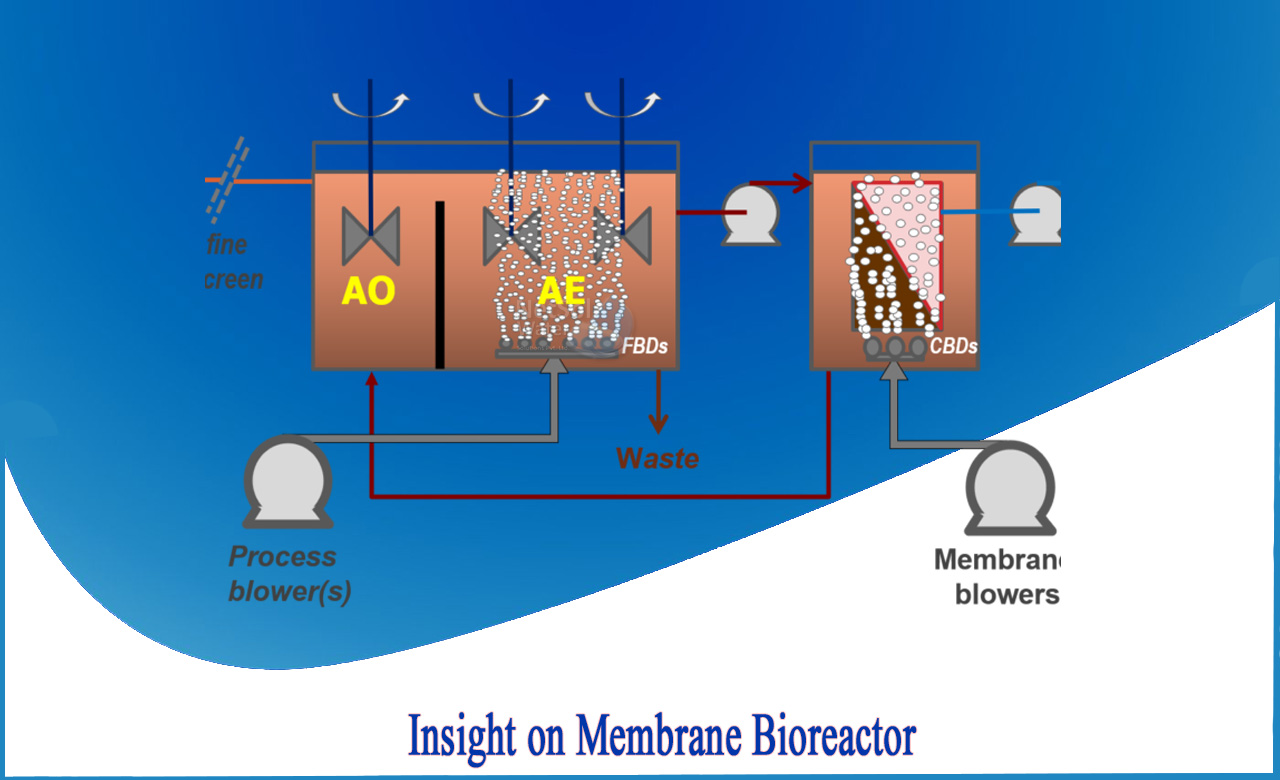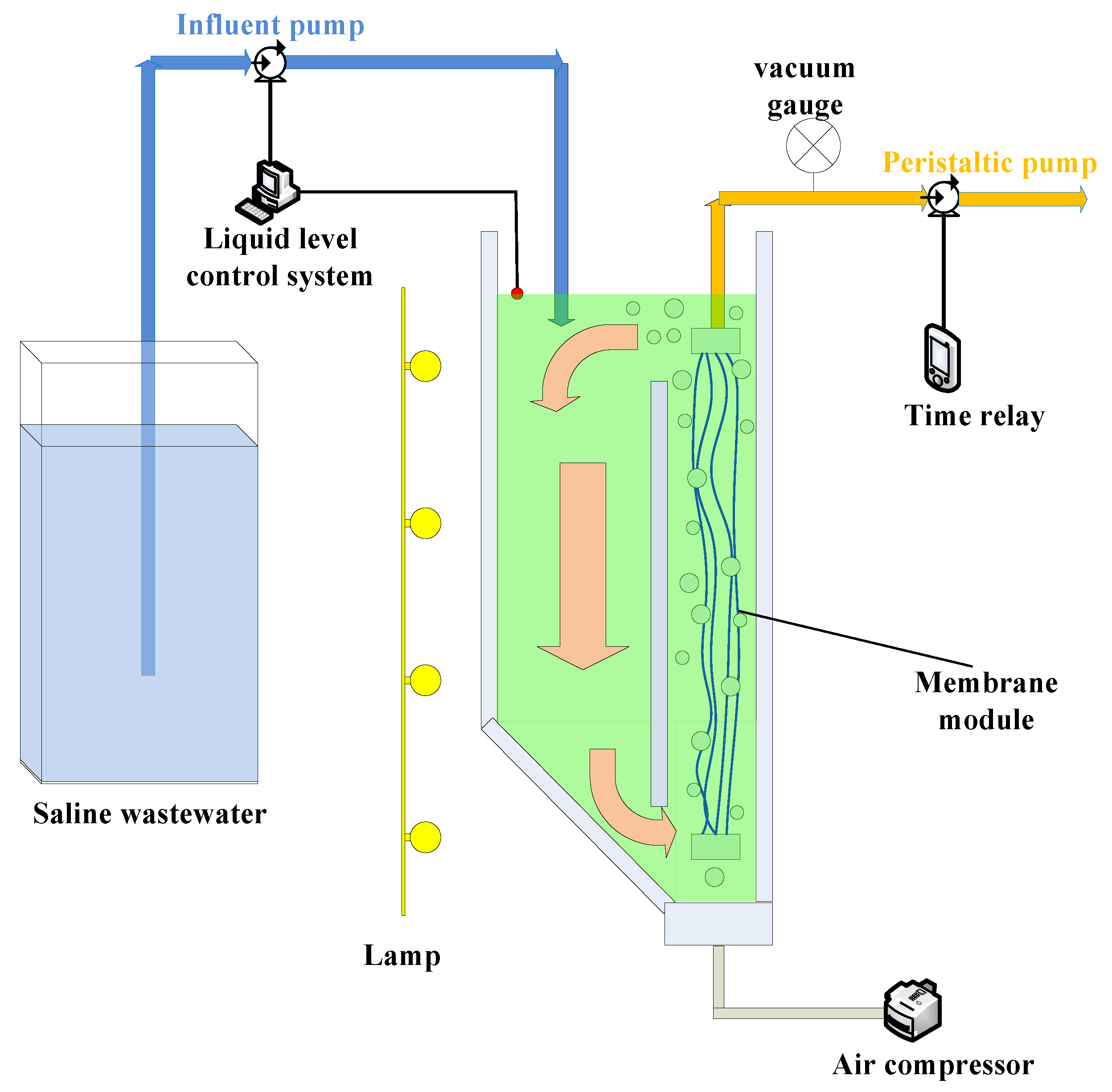Why Membrane Bioreactor Solutions Are Ideal for Sustainable Water Treatment
Wiki Article
The Benefits of Membrane Bioreactors in Sustainable Wastewater Monitoring
Membrane bioreactors (MBRs) stand for a pivotal innovation in sustainable wastewater management, effectively merging biological treatment with sophisticated membrane filtering technology. As the need for lasting options increases, exploring the multifaceted advantages of MBRs might expose unanticipated implications for the future of wastewater treatment systems.Review of Membrane Layer Bioreactors
Membrane bioreactors (MBRs) represent a considerable innovation in wastewater therapy innovation, integrating organic deterioration with membrane layer filtering to boost the performance of the treatment procedure. This cutting-edge system combines the benefits of standard triggered sludge processes with membrane layer modern technology, enabling enhanced solid-liquid splitting up. MBRs use semi-permeable membrane layers to separate treated water from biomass, leading to high-grade effluent that can be reused or safely discharged into the atmosphere.The operational layout of MBRs normally entails a bioreactor where microbes damage down organic matter, followed by a membrane system that filters the blended alcohol. This configuration not only decreases the footprint of the treatment center but also enables greater biomass concentrations and reduced hydraulic retention times. Additionally, MBRs are qualified of treating a larger series of pollutants, including nutrients and virus, making them suitable for different applications, from local wastewater treatment to commercial effluent processing.
The assimilation of MBRs right into wastewater administration systems is a measure of a growing pattern towards reliable and lasting methods in environmental design. Their capacity to generate high-grade effluent while minimizing space needs settings MBR innovation as a vital player in modern-day wastewater therapy remedies.
Boosted Effluent Quality

The membrane purification process acts as a physical obstacle, enabling the retention of microbes and particulate matter, which contributes to a more clear and cleaner effluent (Membrane Bioreactor). In addition, MBRs run at greater biomass focus than conventional turned on sludge systems, advertising a lot more effective biodegradation of pollutants. This brings about a decrease in biochemical oxygen demand (FIGURE) and overall put on hold solids (TSS) levels in the last effluent
Additionally, MBRs show superb efficiency in treating challenging wastewater structures, such as industrial effluents and wastewater with high nutrient lots. As an outcome, the effluent created is often of greater quality, allowing for more flexible disposal choices and decreased ecological influence. Inevitably, the enhanced effluent top quality attained via MBR innovation highlights its critical role ahead of time sustainable wastewater management practices.
Water Reuse Opportunities
The high-quality effluent generated by membrane bioreactors (MBRs) opens up substantial chances for water reuse in numerous applications. MBRs efficiently eliminate impurities, including virus, put on hold solids, and this website natural issue, resulting in treated water that satisfies or exceeds governing standards for reuse. This top quality enables the implementation of water reusing efforts across diverse markets.One famous application is in farming, where treated wastewater can be made use of for watering, promoting lasting farming methods while preserving freshwater resources. Furthermore, MBR-treated effluent can be made use of for commercial procedures such as cooling, cleaning, and as a procedure water source, substantially minimizing the need for drinkable water in these procedures.
In metropolitan atmospheres, MBRs help with making use of recovered water for landscape irrigation, bathroom flushing, and other non-potable usages, adding to the total resilience of water system systems. In addition, the combination of MBR innovation in decentralized systems help in handling local water needs, specifically in water-scarce areas.
Reduced Ecological Impact
How can the fostering of membrane layer bioreactors (MBRs) contribute to a minimized have a peek at these guys environmental effect in wastewater management? MBRs significantly improve the therapy effectiveness of wastewater while reducing eco-friendly disruptions. Membrane Bioreactor.Furthermore, MBRs operate at reduced hydraulic retention times compared to standard systems, resulting in smaller sized treatment plant footprints. This portable style lowers land usage, consequently preserving natural habitats and biodiversity. The process also generates less sludge than conventional methods, minimizing disposal obstacles and reducing greenhouse gas discharges related to sludge monitoring.
In addition, MBRs assist in the recuperation of important resources, such as water and nutrients, adding to a round economy. By enabling water reuse for irrigation or commercial processes, MBRs assist ease freshwater deficiency, therefore promoting lasting water utilize techniques. Ultimately, the fostering of MBR innovation represents a significant stride in the direction of decreasing the environmental influence of wastewater administration systems.
Financial Advantages of MBRs

In addition, MBRs help with the manufacturing of high-grade effluent, which can be recycled for various applications, such as agricultural watering and commercial procedures - Membrane Bioreactor. This reuse capacity can substantially decrease water procurement expenses, giving a financial motivation for industries encountering strict water laws
The small layout of MBR systems additionally causes reduced land needs, which is specifically important in urban locations where property is expensive. By lessening area, municipalities and markets can save on land acquisition and maintenance expenditures.
Furthermore, MBRs often call for less regular upkeep and have a longer life-span than typical systems, better adding to set you back savings. my site In recap, the economic advantages of MBRs-- ranging from minimized operational expenses to land financial savings and effluent reuse-- make them an engaging choice for lasting wastewater management, using both instant and long-lasting financial benefits.
Verdict
Additionally, MBRs add to reduced ecological impacts with compact layouts and reduced sludge generation. Economic benefits even more enhance their feasibility, making MBRs an encouraging option for dealing with the challenges of wastewater therapy and advertising lasting source monitoring.
Membrane bioreactors (MBRs) represent a pivotal development in lasting wastewater monitoring, effectively merging biological treatment with advanced membrane layer filtering innovation.Membrane layer bioreactors (MBRs) stand for a considerable improvement in wastewater therapy modern technology, integrating biological deterioration with membrane purification to enhance the efficiency of the treatment process.Accomplishing improved effluent top quality is one of the most substantial benefits of making use of membrane bioreactors (MBRs) in wastewater treatment.Additionally, MBRs show superb efficiency in treating tough wastewater compositions, such as industrial effluents and wastewater with high nutrient loads.Integrating membrane bioreactors (MBRs) right into wastewater administration not just reduces ecological effect yet also provides significant economic benefits.
Report this wiki page